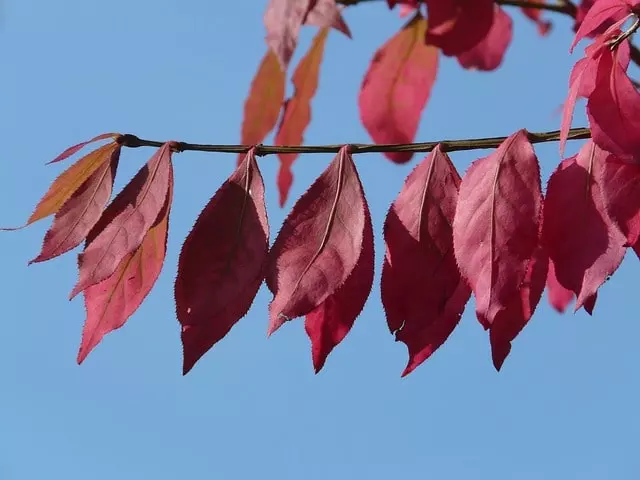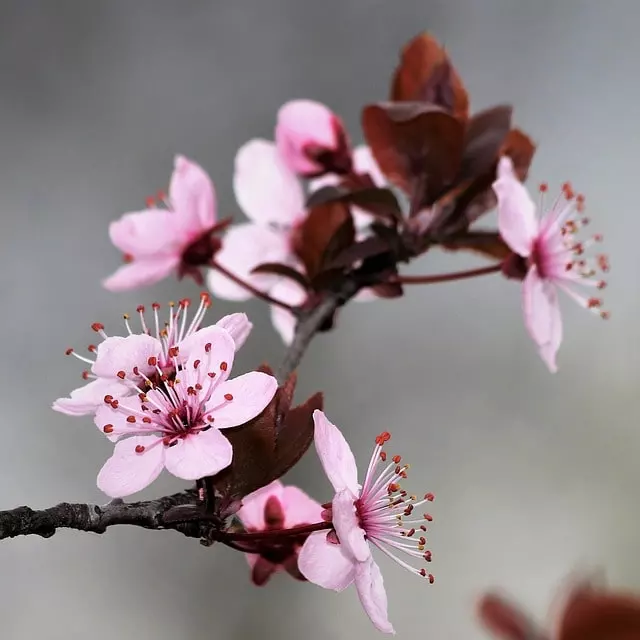Purple leaf plum tree (Prunus cerasifera) also known as myrobalan plum or cherry plum is a beautiful flowering tree that is very nice to decorate gardens. This tree is relatively small and produces beautiful flowers that will stand out in any garden. Continue reading to learn more about purple leaf plum tree pros and cons.
Purple leaf plum is native to Southeast Europe and West Asia. Prunus cerasifera is one of the many purple-leaved trees that exist, and in this case, it is of the deciduous type, does not exceed 25 ft (8 m) in height, and has a highly branched and rounded crown.
In this article, I will not only talk about the pros and cons of the purple leaf plum tree, but I will also give tips for the care and pruning of the purple leaf plum tree.
Table of Contents
How to Care for a Purple Leaf Plum Tree
Purple leaf plum tree prefers USDA Hardiness Zones 4 to 9. If you want to have a purple leaf plum tree in your garden, do not hesitate. It is very easy to take care of it, besides it is a very decorative tree. These are the care that the purple leaf plum tree needs:
Climate: Resistant to hard frosts and moderate droughts. It will give a more abundant flowering if it has a minimum of 500 “chill hours” per year, which are hours below 45 °F (7 °C).
Soil: It does not need very rich soil, but it must be loose and light so that its roots have a good aeration. It should also have good drainage to avoid excess water. For this reason, the worst soils are clay soils. A pH of 5 to 7 is ideal for the growth and development of purple leaf plum tree. I recommend reading our article on how to measure soil pH.
Location: The best location for a purple leaf plum tree is a sunny spot, except in areas with summers are very hot where it will be better in semi-shade. It should receive at least 6 to 8 hours of sunlight to have its most vibrant purple color.
Watering: The purple leaf plum tree requires moderate watering without excesses, more regular in the hot season. You can add mulch to promote moisture retention.
Fertilizing: Fertilize your purple leaf plum tree annually in early spring following the manufacturer’s directions. A 6-2-4 NPK fertilizer will be adequate for a purple leaf plum tree. If your soil is fertile just fertilize every two years.
If you live in USDA zones 4 to 9 your purple leaf plum tree will grow well as long as it is cared for as mentioned above. It is a very nice tree to decorate gardens. These trees usually live for around 20 years.
Pruning Purple Leaf Plum Tree
Pruning a purple leaf plum tree involves removing dead, diseased, or damaged branches, shaping the tree, and promoting healthy growth. To avoid removing flower buds for next year, it is recommended to prune the tree after it has already flowered. However, dead, damaged, or diseased branches can be pruned anytime during the year.

Pests and Diseases Purple Leaf Plum Tree
Purple leaf plum is affected by a few pests and diseases. This tree can be attacked by mealybugs and aphids, which are easily combated with ladybugs or neem oil.
Purple leaf plum can also have problems with rust fungus, whose symptoms are yellowish spots on the upper side of the leaves and orange bumps on the underside that darken. The University of Massachusetts mentions in their article different ways to combat rust fungus.
Purple Leaf Plum Tree Pros and Cons
Purple leaf plum trees are a popular ornamental tree, prized for their unique purple foliage and delicate pink or white flowers. However, like any plant, there are both pros and cons to growing them. Below is a list of purple leaf plum tree pros and cons.
Pros
- Stunning visual appeal: The deep purple leaves and blossoms of a purple leaf plum tree make it a showstopper in any landscape or garden.
- Low maintenance: These trees are relatively easy to care for and require little pruning or maintenance once established.
- Attracts wildlife: The fragrant blossoms of the tree attract bees and other pollinators, while the fruit can be a source of food for birds and other animals.
Cons
- Short lifespan: purple leaf plum trees have a relatively short lifespan compared to other fruit or ornamental trees, typically living only 15–20 years.
- Susceptible to disease: These trees can be vulnerable to various fungal diseases and pests, which can cause significant damage or even death if left untreated.
- Messy: The fruit of the tree can be messy when it falls, and the tree can also drop a significant number of leaves throughout the growing season, requiring frequent clean-up.

Final Conclusions
Purple leaf plum tree is a beautiful tree that will always be an eye-catcher in any garden. Personally, the only disadvantage I see to this tree is that unfortunately, it does not live so many years. I hope this article about purple leaf tree pros and cons will be useful and help you decide if this is a tree for your garden.
